#lambeosaurine
Text

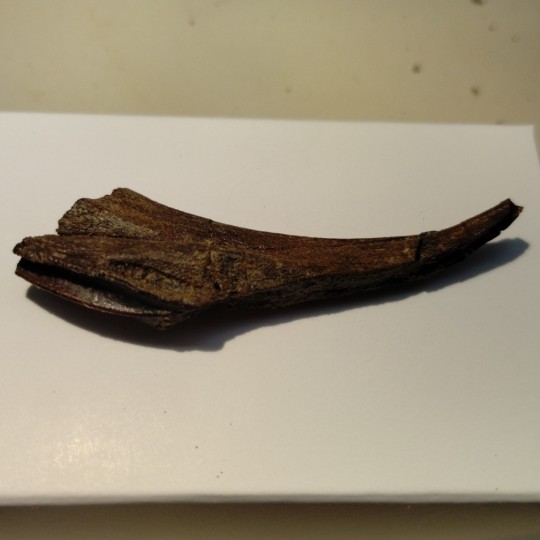




Some smaller projects
#badlands dinosaur museum#troodontid#Lambeosaurine#hadrosaur#Tyrannosaur#Judith River#paleontology#palaeontology#paleoblr#palaeoblr#fossils#dinosaurs#cretaceous#fossil prep#pterosaur
41 notes
·
View notes
Text
Campanian Romance

Parasaurolophus spp. is my favourite hadrosaur. The colours are inspired by that of a gemsbok (Oryx gazella).
#parasaurolophus#parasaurolophus walkeri#p. walkeri#lambeosaurine#hadrosaur#ornithopod#cerapod#ornithischia#dinosaur#paleoart#palaeoart
20 notes
·
View notes
Text
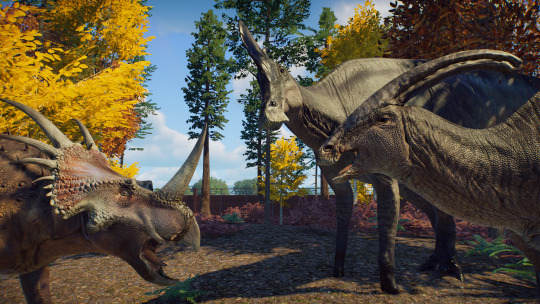
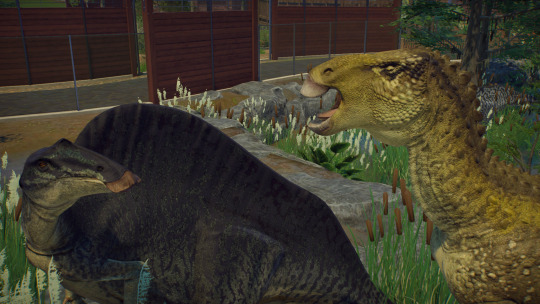
Have some ornithischians
#prehistoric kingdom#iguanodon#ouranosaurus#lambeosaurus#lambeosaurine#styracosaurus#parasaurolophus
8 notes
·
View notes
Note
How is the parasaurolophus used its horn for sound resonating idea seen nowadays?
100% the leading hypothesis. we've even modeled what the sound would be like
8K notes
·
View notes
Text
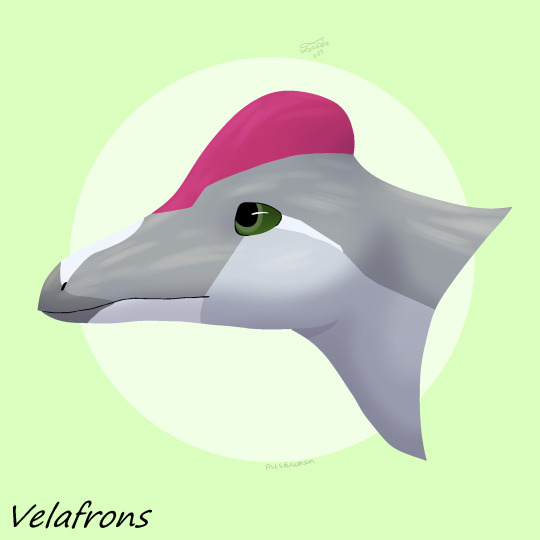
Day 25- Velafrons
Prompts
#art#my art#digital art#paleoart#dinovember#paleontology#palaeoblr#archosaurs#dinosaurs#ornithischians#ornithopods#hadrosaurids#lambeosaurines#velafrons#queue
11 notes
·
View notes
Text

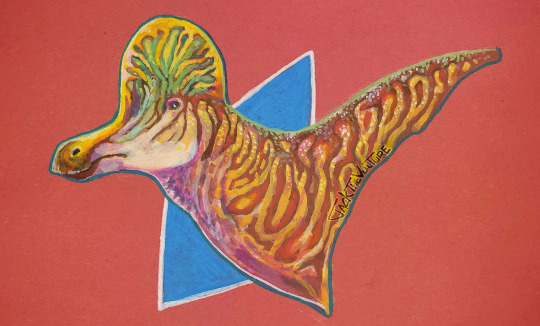

Traditional art dump with some lambeosaurines! Lambeosaurus, Corythosaurus, Lambeosaurus (without any kind of ref for the last one lol). First is oil pastel, mostly Mungyo gallery pastels, Second two are cheap acrylic paint pens, thought the second includes some regular marker for tinting. These were fun! I think my digital painting workflow translates intuitively to opaque traditional media.
Edit: Lambeosaurines, not lambeosaurs. You get the idea.
539 notes
·
View notes
Text

[fossils] [second form]
so the rocks where fossils after all
perezonyx
in the past there was a gorup of large sloths that instead of living in the trees dwelled on the ground, they lived in the american continent since the paleogene and during the neogene going extinct soon after the arrival of man, one specific mexican specimen was xibalbaonyx, who fell into a cave and probably died soon after
[source]

tlapitzafrons (tlatolophus, huilacapitztli=flute/ocarina?, velafrons)
based on the mexican hadrosaurs velafrons and tlatolophus, and the huilacapitztli or prehispanic ocarinas
velafrons and tlatolopus are lambeosaurine hadrosaurs discovered in different parts of mexico, both mainly known for their skull. as a relatively simple wind instrument there are records of ocarinas in prheispanic america that might have developed before or at the same time as the european and asian ones, i should mention its hard to find a proper nahuatl translation as i found examples of the word huilacapitztli refering to flutes and chichtli as a translation of ocarina but also lung, the name could also depend on the region or the meanings be mistranslated

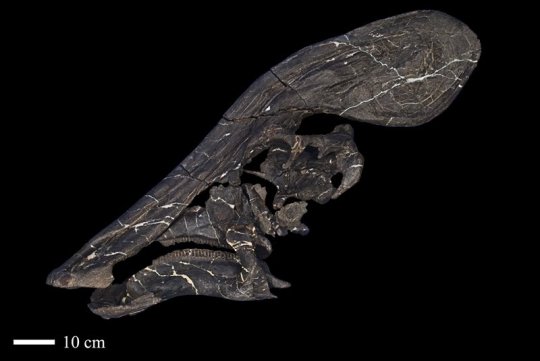

[ocarina picture] [huilacapitztli] [chichtli] [huilacapitztli as flute]
#my art#oc#oc art#creature design#mesoma region#faketober#fakemon#fakemon art#artists on tumblr#ground sloth#xibalbaonyx#hadrosaur#tlatolophus#velafrons
23 notes
·
View notes
Text
Malefica deckerti Prieto-Márquez & Wagner, 2022 (new genus and species)
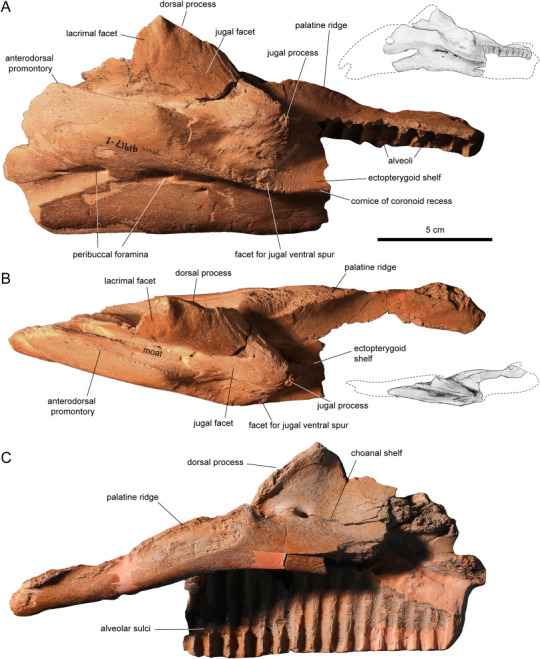
(Type maxilla [bone in the upper jaw] of Malefica deckerti, from Prieto-Márquez and Wagner, 2022)
Meaning of name: Malefica = witch [in Latin, referring to its discovery at Bruja Canyon, with “Bruja” being Spanish for “witch”]; deckerti = for Frank Deckert [former superintendent of Big Bend National Park and discoverer of the original fossil]
Age: Late Cretaceous (Campanian)
Where found: Aguja Formation, Texas, U.S.A.
How much is known: A partial left maxilla (one of the bones in the upper jaw).
Notes: Malefica was a hadrosaurid (duck-billed dinosaur), but probably not a member of either of the two major lineages, the broad-billed saurolophines and the crested lambeosaurines, which together form the group Euhadrosauria. Up until the last decade, very few non-euhadrosaur hadrosaurids had been identified, but recent finds, including Malefica, have substantially added to the known diversity in this part of the hadrosaurid family tree.
Although Malefica is only known from a single incomplete bone, the maxilla has been found to be a useful element for distinguishing between different hadrosaurids, allowing the type specimen to be recognized as a probable new species.
Reference: Prieto-Márquez, A. and J.R. Wagner. 2022. A new ‘duck-billed’ dinosaur (Ornithischia: Hadrosauridae) from the upper Campanian of Texas points to a greater diversity of early hadrosaurid offshoots. Cretaceous Research advance online publication. doi: 10.1016/j.cretres.2022.105416
60 notes
·
View notes
Text
👇👇👇 highland gliders ok?
females tend to have sharper and thinner crests so sounds are slightly more high pitched, a bit like whistles, while males have broader and wider crests that produce a variety of low pitched sounds
penguin anon/penguins-dragons originally came up with this idea
10 notes
·
View notes
Note
Have you done an MH tree for herbivores yet, or were we just not paying attention?
I actually don’t think I will because the herbivore classification is just for “small” monsters that eat plants. It’s sort of a dubious class since technically the Blos wyverns and Gammoth would technically fall under that category.
But I can tell you what I think the various herbivores are!
Gastodon and Kestodon are technically brute wyverns related to Banbaro according to the canon trees, and honestly that actually makes quite a lot of sense and is pretty interesting so I agree! But I do have non-carnivorous brutes as heterodontosaurs.
As for the various mammals in the class… Burukku is pretty obviously a buffalo, and Erupe and Anteka are goats. Moofah seems to be a sheep. Mosswine is a pig. Kelbi actually feels like an Antilocaprid to me, which would make it related to giraffes. Popo I have as the closest living relatives of Gammoth, which together are descendants of early Proboscideans that split off from all other more “normal” members.
Epioth I actually covered in my recent tree!
Larinoth feels like a titanosaur of some kind, albeit an odd one. Both Slagtoth and Rhenoplos are ceratopsians, and Slagtoth in particular feels like a member of the Pachyrhinosaurini. Aptonoth seems to be a heavily armored Lambeosaurine. Apceros… I’m not so sure on. Ankylosaur is tempting but it’s shell is very different from them, so “Thyreophoran” is as much as I can narrow it down.
Gowngoat… I don’t know. It’s got this weird mish mash of dinosaur and goat traits. Maybe ornithopod??
#ask#questions#dappercritter#monhun#monster hunter#monsterhunter#monster hunter biology#speculative biology#speculative evolution
10 notes
·
View notes
Text
💕💚I love you Utahraptor I love you Fruitadens I love you Camarasaurus I love you Allosaurus I love you Dryosaurus I love you Peloroplites I love you Nanosaurus I love you Stegosaurus I love you Animantarx I love you Camptosaurus I love you Brachiosaurus I love you Lambeosaurines I love you Chasmosaurus I love you Prosaurolophus I love you Stegouros I love you Gastonia I love you Eolambia I love you Fulcarius I love you Mymoorapelta I love you Therizinosaurus I love you Deinocheirus I love you Anchiornis I love you Borealapelta I love you Sinosauropteryx I love you Albertasaurus I love you Velociraptor I love you Mononykus I love you Torosaurus💚💕
75 notes
·
View notes
Text

Brachylophosaurus canadensis was a saurolophine hadrosaur from the Late Cretaceous of North America. Saurolophines were cousins to the intricately-crested lambeosaurine hadrosaurs, and were on average more boxy and robust, with some very large forms like Edmontosaurus and Shantungosaurus rivaling sauropods in size.
20 notes
·
View notes
Text

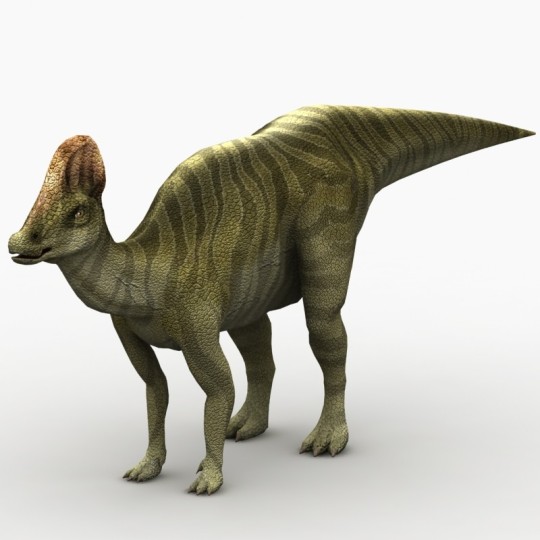

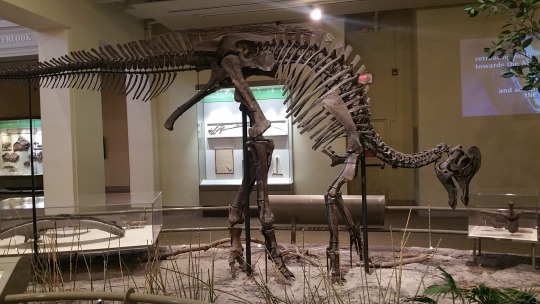

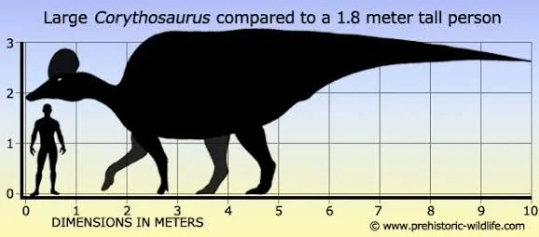
Corythosaurus
(temporal range: 77-75.7 mio. years ago)
[text from the Wikipedia article, see also link above]
Corythosaurus (/kəˌrɪθəˈsɔːrəs/;[1] lit. 'helmeted lizard') is a genus of hadrosaurid "duck-billed" dinosaur from the Late Cretaceous period, about 77–75.7 million years ago, in what is now western North America. Its name is derived from the Greek word κόρυς, meaning "helmet", named and described in 1914 by Barnum Brown. Corythosaurus is now thought to be a lambeosaurine, thus related to Lambeosaurus, Nipponosaurus, Velafrons, Hypacrosaurus, and Olorotitan. Corythosaurus has an estimated length of 7.7–9 metres (25–30 ft) and has a skull, including the crest, that is 70.8 centimetres (27.9 in; 2.32 ft) tall.
Corythosaurus is known from many complete specimens, including the nearly complete holotype found by Brown in 1911. The holotype skeleton is only missing the last section of the tail and part of the front legs, but was preserved with impressions of polygonal scales. Corythosaurus is known from many skulls with tall crests that resemble those of the cassowary and a Corinthian helmet. The most likely function of the crest is thought to be vocalization. As in a trombone, sound waves would travel through many chambers in the crest and then get amplified when Corythosaurus exhaled. One Corythosaurus specimen has even been preserved with its last meal in its chest cavity. Inside the cavity were remains of conifer needles, seeds, twigs, and fruits, suggesting that Corythosaurus probably fed on all of these.[2]
The two species of Corythosaurus are both present in slightly different levels of the Dinosaur Park Formation. Both still co-existed with theropods and other ornithischians, like Daspletosaurus, Brachylophosaurus, Parasaurolophus, Scolosaurus, and Chasmosaurus.
2 notes
·
View notes
Text
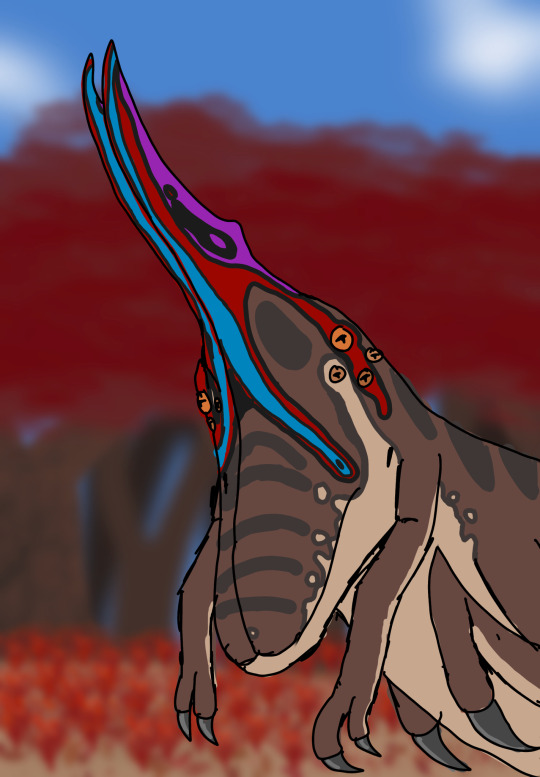
Magnacephalian version of

#erythra#speculative biology#speculative evolution#erythra art#spec evo#original species#magnacephalia#actually#no#neomagnacephalia#lambeosaurine#lambeosaurus
6 notes
·
View notes
Note
Do we have any idea what velociraptors and pterodactyls/pterosaurs sounded like? Asking because often people will say they screeched like a velociraptor/pterodactyl when they make this high pitched shrieking sound and I'm wondering if that's in any way accurate.
Yeah we got nothing. There are quite a few dinosaurs that we know how they sounded, like Lambeosaurines, and of course living ones. But not those.
That said, we can make educated guesses based on living birds. Hisses, low rumbles, that kind of thing.
269 notes
·
View notes
Text
Episode 483: Hadrosaur holotypes and duck-billed diets
I Know Dino Podcast Episode 483: Hadrosaur holotypes and duck-billed diets. A new small African hadrosaur, Minqaria, was named; Mantellisaurus was redescribed and found to be a valid genus; Maiasaura had a high metabolism; and much more
Episode 483: Hadrosaur holotypes and duck-billed diets. A new small African hadrosaur, Minqaria, was named; Mantellisaurus was redescribed and found to be a valid genus; Maiasaura had a high metabolism; and much more
News:
New lambeosaurine dinosaur from Morocco, Minqaria bata source
A new description of Mantellisaurus (including a complete 3D scan of the 80% complete holotype) confirms that…

View On WordPress
1 note
·
View note